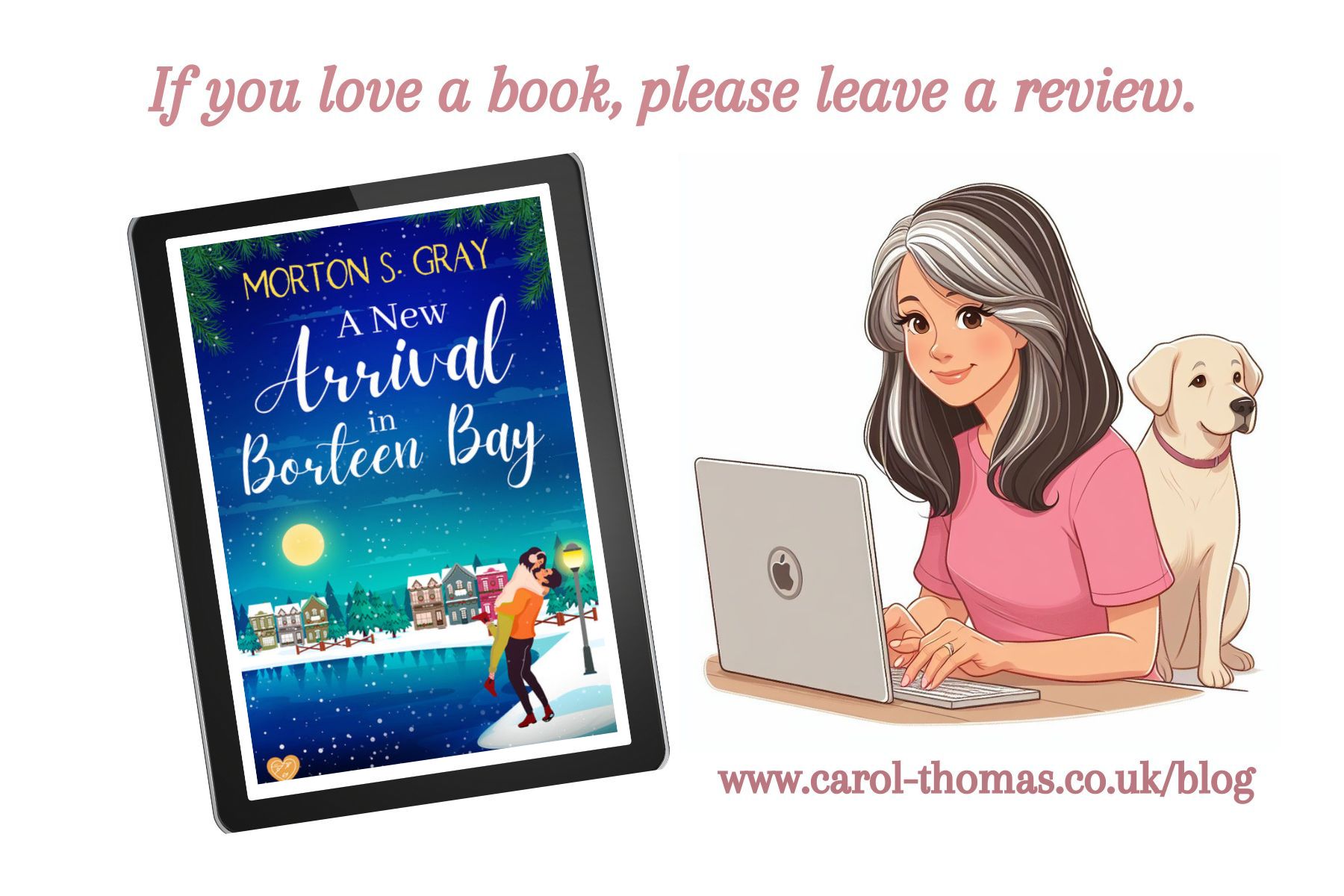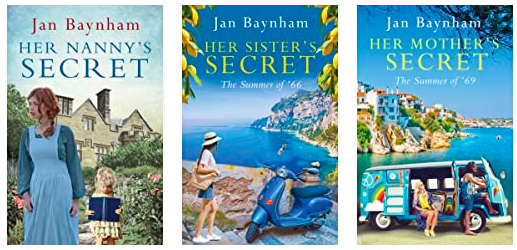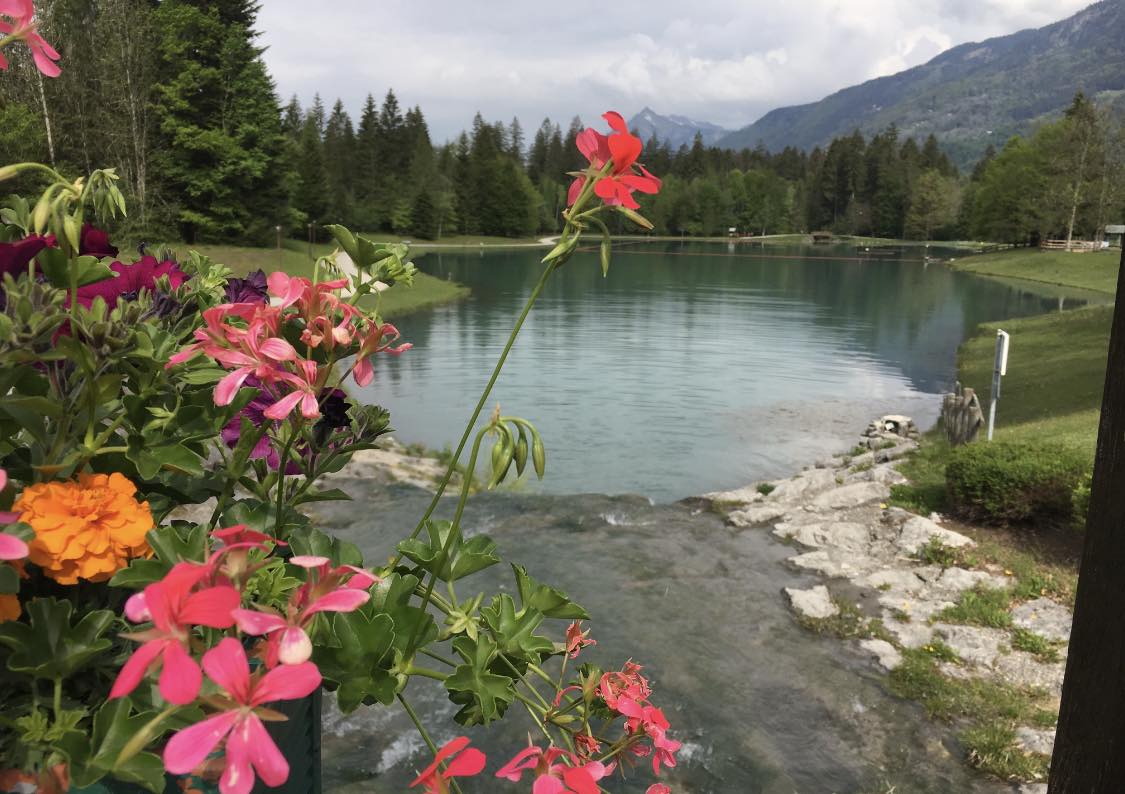This week, I am delighted to be joined by my good friend Morton S. Gray as she talks about writing romance. Over to you, Morton…
Thank you for having me on your blog, Carol. My seventh romantic novel, A New Arrival in Borteen Bay, was published on 23 January 2024 with Choc Lit Publishing, an imprint of Joffe Books.
I sometimes find it quite funny that I’m listed as a romance author. Very often, when I’m writing, I get so carried away with the mystery or the plot of a book that when it comes to the editing stage, I’m often asked to make it much more romantic. I guess it’s the other relationships that make up the story that interest me most.
It’s also a source of fascination to me that we only see people as they appear in front of us, as they are right now and not their history or backstory. We all have our own path through life that makes us who we are, and I think that’s what intrigues writers.
For example, someone looking at me will see a happily married woman with an older son with a lovely partner who has just made me a grandma and a younger son at university. The fourteen years as a solo parent working full time after my divorce from my first husband isn’t visible on the surface at all, and yet those years have had such a huge influence on who I am as a person. But then, taking that a step further, my second marriage is why I believe romance is possible and second chances do come along. I personally have probably lived the plot of many a romance novel!
To give a bit more insight into my take on romance, I thought I would share my favourite romance film, novel, and song. However, it’s tough to choose just one for each of these, so I will give you a selection for each.
Film: Finding You, The Holiday, The Wedding Date.
Novel: Wintercombe by Pamela Belle, Lost Dogs and Lonely Hearts by Lucy Dillon, Starting Over by Sue Moorcroft (I’ve read all of these titles many times over).
Song: Breathless by The Corrs, Wildest Dreams by Taylor Swift.
Thank you for your post, Morton. Despite watching a lot of films, I haven’t seen Finding You, so I will check it out. I do remember you recommended Lost Dogs and Lonely Hearts to me, and I greatly enjoyed reading it, too, as I have each of your romance novels.
About A New Arrival in Borteen Bay:
FALL IN LOVE WITH AN UTTERLY IRRESISTIBLE, BRAND-NEW ROMANCE ABOUT FRESH BEGINNINGS AND LETTING GO OF THE PAST.
Skye knows it’s now or never. It’s time for her to reveal herself to the father she’s never met.
So she hops on a plane from Dublin to the English seaside town of Borteen.
But between the father she’s just getting to know and her worried mother, Skye realizes that the past is never that simple as a whirlwind of secrets turns their world upside down.
And now Skye has Adam, the hunky guy next door, to contend with. He’s determined to show her there’s room in her life for love.
Skye thinks they’re better off as friends, but Adam has other ideas. Even when she reveals a secret of her own.
Will Skye allow history to repeat itself? Or will she let go of the secrets of the past and open herself up to the future?
This uplifting and feel-good romance is perfect for fans of Beth Moran, Shari Low, Jessica Redland, Sue Moorcroft or Isabella Connor.
Purchase or discover more here: A New Arrival in Borteen Bay
My review:
I enjoyed returning to the enchanting setting of Borteen Bay and spending time in the company of Buzz, Skye and Adam. While Adam’s actions sometimes seemed impetuous, I felt this was explained as I discovered more about his character and motivation. For me, Buzz was the real star of the story, emerging as a compelling figure with his poignant creation of a labyrinth on the beach, only for it to be erased by the tide – encapsulating both the fragility of life and the enduring spirit of optimism (something he certainly embodies). As the characters come together, the narrative weaves their individual stories, creating a tapestry of resilience, healing, and acceptance. It’s a lovely, gentle read to cosy up with.
Morton’s books are a delight to read and always have a great hook. If you are looking for a new series to fall in love with, I recommend checking them out: The Secrets of Borteen Bay
About the author:
Morton S. Gray lives in Worcestershire, U.K. She has been reading and writing fiction for as long as she can remember and penned her first attempt at a novel at the age of fourteen. She is a member of the Romantic Novelists’ Association and The Society of Authors.
Morton worked for many years in the electricity industry, developing and training staff. She is a qualified hypnotherapist and Reiki Master. She enjoys crafts and history and loves tracing family trees. Having a hunger for learning new things is a bonus for the research behind her books.
You can find out more about Morton and her work here: website | Twitter | Facebook | Instagram






























